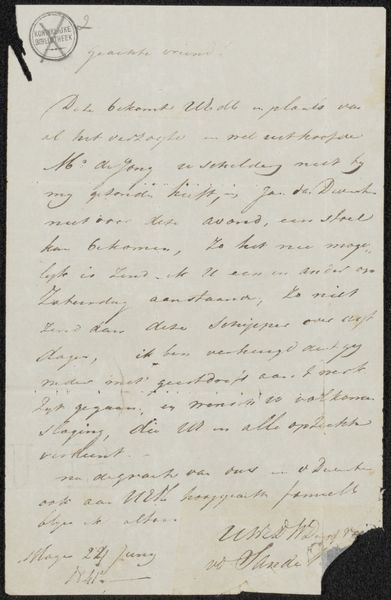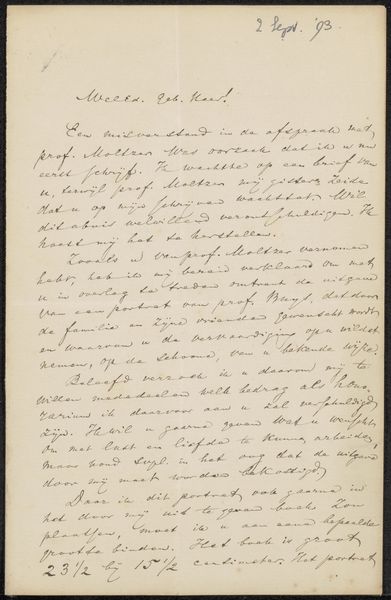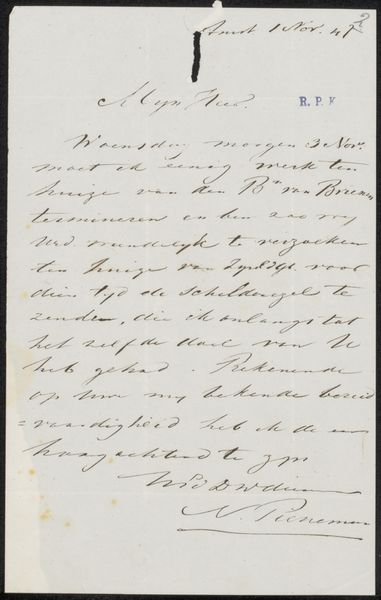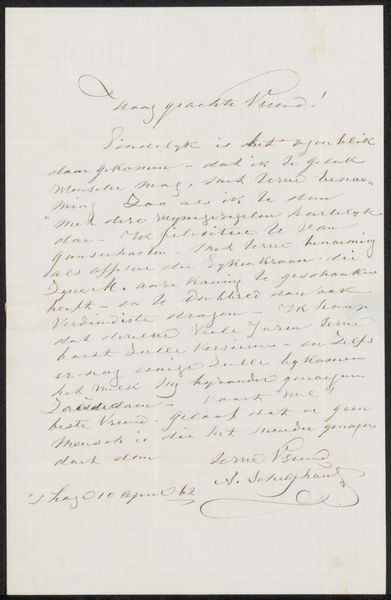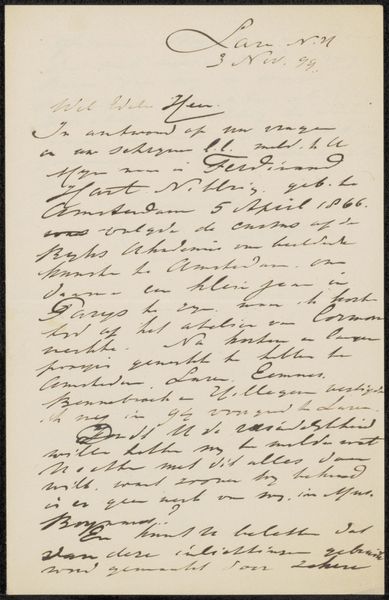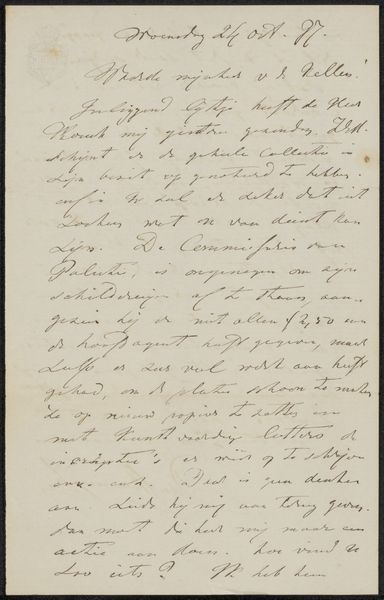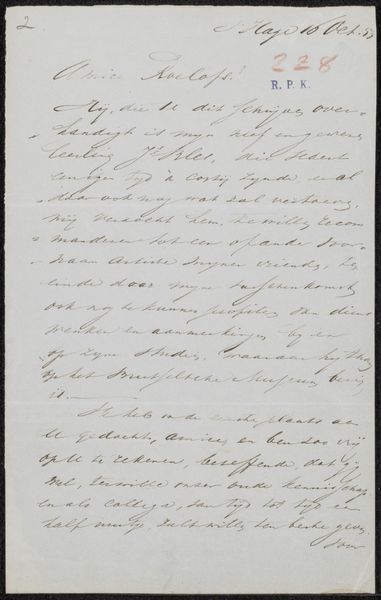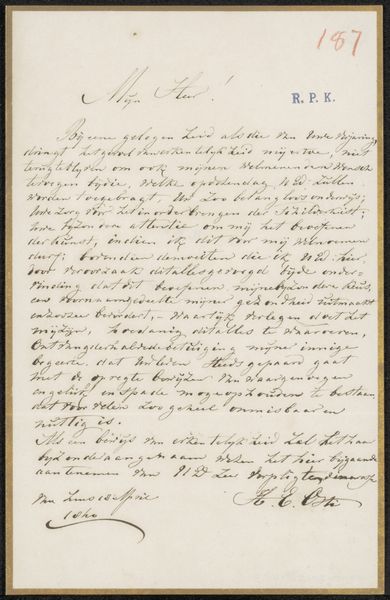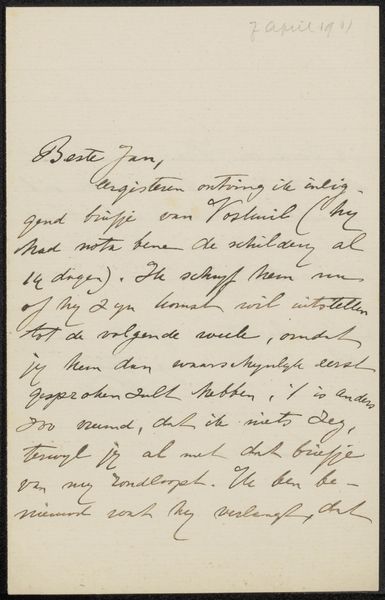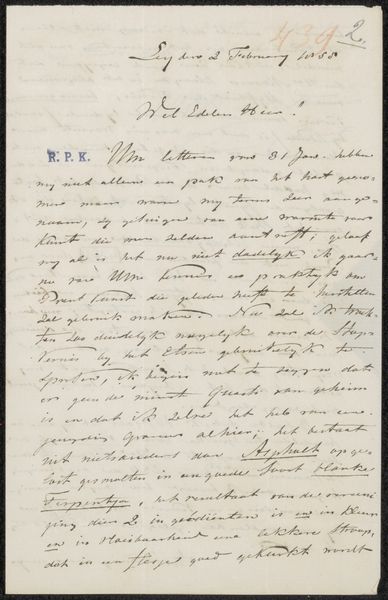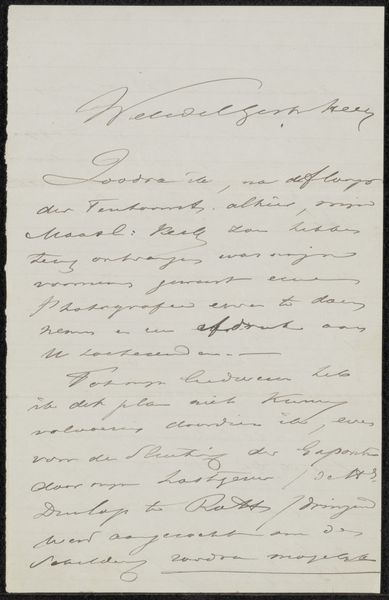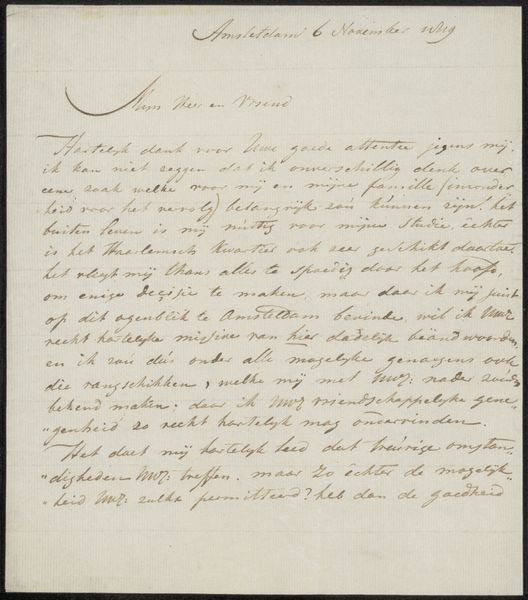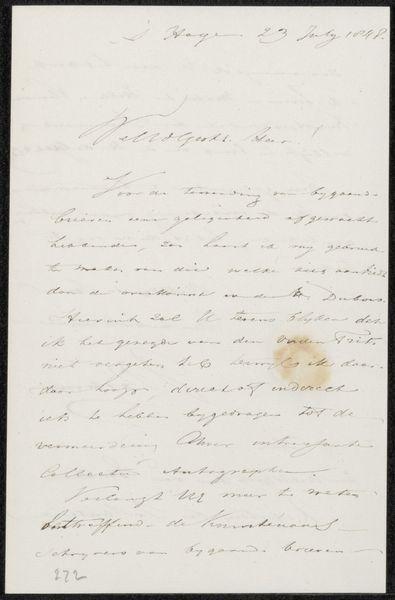
drawing, paper, ink, pen
#
drawing
#
ink paper printed
#
pen sketch
#
hand drawn type
#
paper
#
personal sketchbook
#
ink
#
hand-drawn typeface
#
ink drawing experimentation
#
pen-ink sketch
#
pen work
#
sketchbook drawing
#
pen
#
sketchbook art
#
calligraphy
Copyright: Rijks Museum: Open Domain
Curator: Here we have “Brief aan de heer Johan Philip van der Kellen,” or "Letter to Johan Philip van der Kellen," penned around 1870-1871 by Jan Karel Jacob de Jonge. The piece is crafted with ink on paper, presenting a fascinating example of personal correspondence as art. Editor: It immediately strikes me as an intimate artifact. The density of the script and the faded quality of the ink give it such a weighty, historical presence. It almost feels fragile, filled with the ghosts of its past. Curator: The medium itself is revealing. Pen and ink on paper, while common, suggests a certain level of formality combined with ease. Letters at the time served a purpose beyond simple communication; they documented relationships, transactions, and the daily realities of life for certain classes. It also makes you consider the embodied labor of writing before the advent of faster processes. Editor: Absolutely, and the stylistic elements of that labor contribute a lot. There's a clear consciousness about the formation of letters, a specific, practiced hand which almost transforms language into symbol. You can feel the intent, the careful construction of each sentence meant to carry weight and meaning between individuals, almost ceremonial and therefore important as cultural heritage. Curator: I agree, and it prompts consideration about the social networks facilitated by this form. This wasn't a solitary practice; writing and receiving letters connected people, fostered dialogue, and circulated information in a manner now occupied by digital exchanges. The paper itself bears the marks of handling and transmission, evidence of that circulation. Editor: The handwriting is a world unto itself, wouldn't you agree? The script evokes the feeling of secrets shared across time and space. It is really special just imagining the kind of intimacy and social structure such an everyday artifact, at the time, held for all these historical figures. Curator: Precisely. Considering the materials, their production, distribution, and usage, offers invaluable insight into 19th-century communication networks. This handwritten letter, with its unique history and content, becomes an intimate artifact deeply embedded in specific contexts. Editor: This letter is a reminder that the simplest image can carry worlds of historical memory, it definitely sparks your curiosity, wanting to investigate and reveal the personal side behind the symbol.
Comments
No comments
Be the first to comment and join the conversation on the ultimate creative platform.
